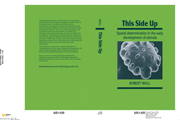Book contents
- Frontmatter
- Contents
- Preface
- Acknowledgements
- 1 Oogenesis
- 2 From oocyte to zygote
- 3 Does cleavage cut up a preformed spatial pattern?: the case of spiralian embryos
- 4 The limits of mosaicism in non-spiralian cleavage
- 5 Cellular interactions in the morula and blastula: the case of sea urchin embryos
- 6 Interactions at morula and blastula in other embryos
- 7 Interactions between moving cells: the case of amphibian gastrula
- 8 Spatial determination in the gastrulae of other groups
- 9 Determination in embryos showing partial cleavage
- 10 Patterns and mechanisms in early spatial determination
- References
- Index
6 - Interactions at morula and blastula in other embryos
Published online by Cambridge University Press: 06 October 2009
- Frontmatter
- Contents
- Preface
- Acknowledgements
- 1 Oogenesis
- 2 From oocyte to zygote
- 3 Does cleavage cut up a preformed spatial pattern?: the case of spiralian embryos
- 4 The limits of mosaicism in non-spiralian cleavage
- 5 Cellular interactions in the morula and blastula: the case of sea urchin embryos
- 6 Interactions at morula and blastula in other embryos
- 7 Interactions between moving cells: the case of amphibian gastrula
- 8 Spatial determination in the gastrulae of other groups
- 9 Determination in embryos showing partial cleavage
- 10 Patterns and mechanisms in early spatial determination
- References
- Index
Summary
The last chapter presented the evidence that the determination of cells in the sea urchin morula and blastula is affected by interactions occurring throughout the embryo. The present chapter will consider evidence for similar interactions occurring at the equivalent stages in other animal embryos.
Insects
As has already been made clear (p. 119), the nuclei of insect eggs at first divide without cleavage of the cytoplasm. The stages considered here (Fig. 6.1) are those when most nuclei enter the peripheral cytoplasm (the syncytial blastoderm), when cleavage furrows appear between them (the cellular blastoderm) and when the future embryonic area becomes recognisable (germ band stages). Despite the great morphological differences from the sea urchin, developmental interactions apparently determine cell fates in a similar way, and the mechanisms involved have been subjected to genetic analysis particularly in Drosophila.
Cycles of nuclear division are lengthening during these stages (e.g. see Foe & Alberts, 1983), just as cleavage cycles do in the equivalent stages of other embryos. At syncytial blastoderm stages they occur as parasynchronous waves, starting in positions which vary with the species and even sometimes amongst individuals (Miyamoto & van der Meer, 1982; Foe & Alberts, 1983; Lundquist & Löwkvist, 1983). The divisions become completely asynchronous during cellular blastoderm stages, despite the fact that the nuclei are not completely separated by the new membranes. The ingrowth of furrows apparently uses a single network of microfilament bundles extending throughout the cortex of the blastoderm (Fullilove & Jacobson, 1971; Warn, Bullard & Magrath, 1980).
- Type
- Chapter
- Information
- This Side UpSpatial Determination in the Early Development of Animals, pp. 168 - 210Publisher: Cambridge University PressPrint publication year: 1990



